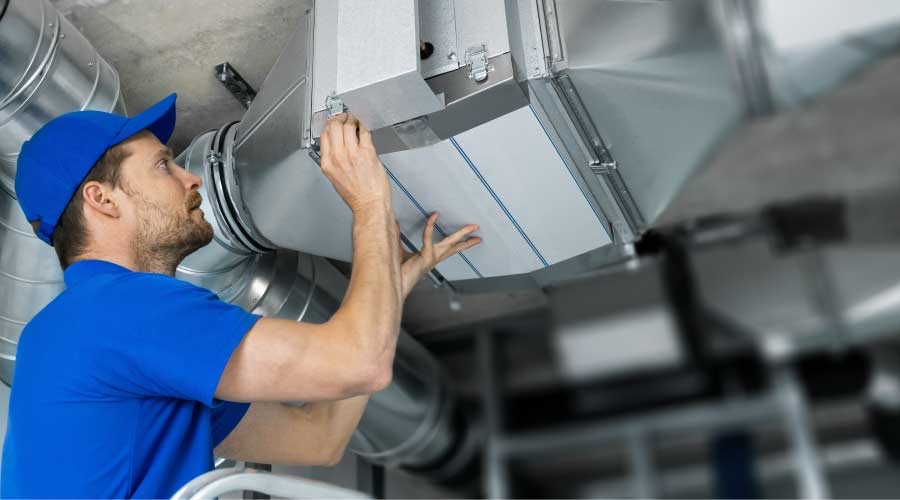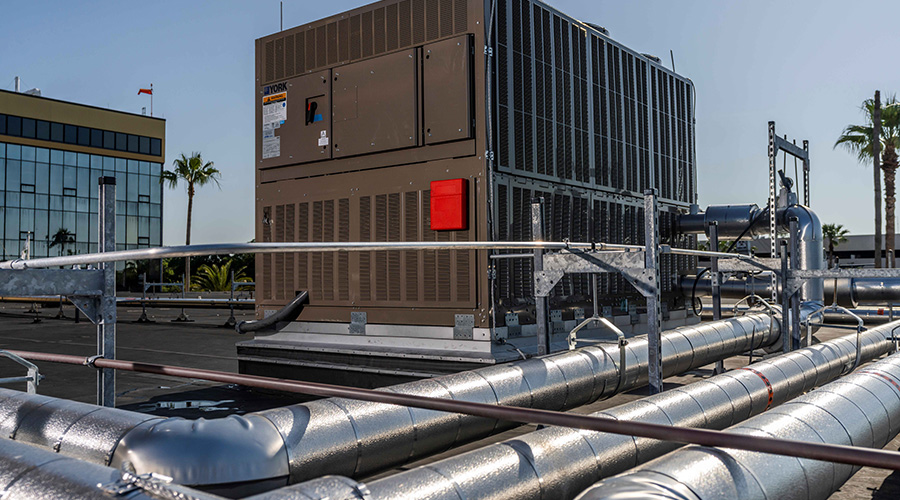Prescription for Hospital Health
Organizations expand efforts to protect front-line workers from all-too-common hazards
Facilities maintenance and engineering can be a risky line of work. Managers, supervisors, and front-line technicians are well-aware of the on-the-job hazards that await technicians each day as they perform their duties on electrical systems and heating, ventilation and air conditioning (HVAC) equipment, as well as in confined spaces and on rooftops.
But workers in health care facilities face an added layer of danger to their safety. They risk infection while working in areas with sick patients, and they risk physical injury while handling, transporting and disposing of the many chemicals that move through hospitals, nursing homes and medical offices. And those are just two examples of the many risks workers face.
Now, as scrutiny grows on the impact facilities have on the environment — as well as on occupants — a change is taking place. Industry groups and health care executives, along with maintenance and engineering managers, are revisiting the way front-line workers carry out their daily activities in an effort to lower the risks and make workers healthier and safer.
“We put people in the position of fixing these problems, so we have to take care to protect them properly,” says Kathy Gerwig, vice president of workplace safety for Kaiser Permanente.
Targeting Health and Safety
Kaiser Permanente is among the organizations involved in forming the Global Health and Safety Coalition in October 2007. The initiative is a sector-wide partnership that aims to improve the environmental friendliness of the health care industry, as well as improve the health and safety of patients and workers.
Managers are very familiar with these issues and are likely to welcome the initiative’s efforts, says Janet Brown, partner program manager with Hospitals for a Healthy Environment, a member of the initiative.
“Facility managers have been advocates of these issues all along, but they haven’t had buy-in from their leadership,” Brown says. “Managers have been ahead of the curve on this. This should be a breath of fresh air for them”
The initiative includes a total of 21 health care organizations representing 200 hospitals and 100,000 beds, along with four group-purchasing organizations that account for one-half of all the product spending in health care.
Among the organizations in the initiative are the Cleveland Clinic Foundation, Henry Ford Health Systems, the University of Michigan Medical Center, the University of Chicago Medical Center, the San Francisco Medical center, and Health Care Without Harm. For more on the initiative, see sidebar below.
Assessing the Risks
Though green is the initiative’s umbrella message, worker safety and health is a major component of that message. The risks to maintenance workers are generally well known:
-
Ergonomics. “One-half of all worker injuries are related to activities such as working in tight spaces and moving heavy equipment,” Gerwig says.
-
Noise and vibration. Technicians face damage to their hearing when working in mechanical equipment rooms or carrying out routine procedures, such as testing backup generators.
-
Chemicals. Housekeepers often must use powerful cleaning to keep indoor environments as clean as possible to prevent the spread of sickness, and many HVAC technicians must regularly handle a range of caustic refrigerants.
-
Dust and mold. As facility occupants become more aware of the health risks of these substances, maintenance workers — both housekeepers and HVAC technicians — come into more regular contact with them in troubleshooting the source of the problem and cleaning up the affected areas.
Gerwig also points to several risks to maintenance workers that are unique to health care facilities.
HVAC technicians, for example, are at risk when fixing the pressure in a negative-pressure patient room. And housekeeping crews are at greater risk when cleaning and disinfecting problematic areas of buildings, such as those infected with methicillin resistant staphylococcus aureus (MRSA), the dangerous bacteria that has made headlines in recent months.
Taking Aim at Risk
Such hazards are at the center of the initiative’s efforts to improve the conditions for front-line maintenance and engineering technicians, as well as others involved in related activities. Members of the initiative plan to meet early this month to divide into work groups to address key issues.
“By the end of the year, we want to complete the first stab at an open-source web site,” Gerwig says. By October 2008, the members want to have the web site completed and research begun.
Among Kaiser Permanente’s contributions to the initiative is a set of 180 design elements that aim to improve safety and health that will be part of the web site.
“These are very real tools that will help people improve safety,” Gerwig says.
Kaiser Permanente’s efforts with the initiative are based on its own experiences. In 2001, the organization launched a program that was designed to improve worker safety in its 32 medical centers and 416 medical offices nationwide, Gerwig says.
The organization’s maintenance and engineering department teamed with its environmental health and services department to address a range of worker-safety risks, from asbestos management to proper lockout/tagout procedures. The effort seems to have paid off.
“We’ve seen big improvements,” Gerwig says. Since 2001, the organization has experienced a 46 percent decrease in worker injury rates.
On the Horizon
The initiative looks to have its work cut out for it because the opportunities for hazards to worker health and safety in health care seem likely to grow. Health care is one of the largest and fastest-growing sectors of the economy, representing more than 15 percent of the nation’s gross national product. The industry also has a large environmental footprint and high rate of worker injuries.
According to the National Institute for Occupational Safety and Health, “Health care facilities present workers with a myriad of potential health and safety hazards. Compared with the total civilian workforce, hospital workers have a greater percentage of workers’ compensation claims for sprains and strains, infectious and parasitic diseases, dermatitis, hepatitis, mental disorders, eye diseases, influenza, and toxic hepatitis.”
Gerwig pointed out two emerging issues about which the initiative needs more information before it can take specific action.
First, there is the issue of noise. Gerwig says the question is whether noise is a growing problem in health care facilities or if it is coming to light only because of better reporting of problems. Second, the threat from MRSA and the possibility of pandemics is causing concern.
“We haven’t really had to deal with these kinds of issues before” Gerwig says.
The central questions are how, when and whether to put maintenance workers at the center of a health catastrophe.
In the Spotlight: Global Health and Safety Initiative
The Global Health and Safety Initiative formed in October 2007 with 21 health care organizations representing 200 hospitals, along with four group-purchasing organizations that account for one-half of all health care product spending. The initiative’s mission is to build a social movement within health care to improve patient safety, workplace safety and environmental safety and sustainability. It plans to create a learning community that will use an open-source web site to disseminate best practices in design and operations. Among the site’s components:
-
The Green Guide for Health Care. This is the health care sector’s first tool that addresses green hospital design and operations.
-
A searchable database of best practices in the health care built environment from the Center for Health Design
-
A safe and sustainable purchasing resource
-
A health care clean energy exchange.
The home for this information is Hospitals for a Healthy Environment (H2E), www.h2e-online.org. The group is a partnership between the American Hospital Association — www.aha.org — Health Care Without Harm — www.noharm.org — and American Nurses Association.
Finally, the initiative plans to sponsor and facilitate research to demonstrate improvements, as well as new technologies and approaches that address health and safety issues.
— Dan Hounsell
|
Related Topics:











